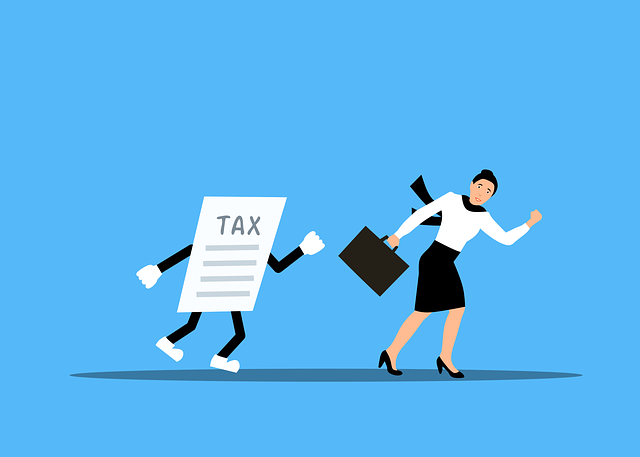We've previously discussed the benefits of EIS and SEIS, although this was primarily from the company's perspective. In this post we focus on the capital gains tax ('CGT') advantages for an individual. Specifically deferring capital gains using EIS and SEIS investments.

How does EIS capital gains deferral work?
When you sell an asset and make a gain, you can reinvest it into EIS shares and delay paying CGT. As a result, the deferred tax liability only becomes payable when you sell the EIS shares. So this allows you to use your money more effectively in the meantime.
The CGT liability can be deferred where the sale proceeds from an asset disposal are re-invested in EIS shares. The deferred gain can be:
Qualifying conditions for EIS capital gains deferral
There are a set of conditions which need to be fulfilled to ensure a successful claim.
Qualifying shares
The shares you invest in must be qualifying EIS shares.
Additionally they must be wholly subscribed for in cash and fully paid up on issue (unless they are bonus shares). Additionally, they must be issued by an EIS qualifying company.
Equally importantly, they must be Issued for bona fide commercial purposes and not as part of a tax avoidance arrangement. The shares must also be issued to raise money for a qualifying business activity. Any money subsequently raised should be used wholly for the purposes of that activity within two years (unless they are bonus shares).
Qualifying individual
There are also a number of conditions to fulfil as a qualifying EIS investor:
There is no upper limit on the overall amount of qualifying investments which can be made in a year. Although, the amount which can be invested in a single company is limited to £5 million (£10 million for Knowledge Intensive companies).
Time limits for making the EIS/SEIS investment
If you are deferring capital gains using EIS and SEIS investments, these must take place in the period of one year before to three years after disposal of the asset. For example, you realise a capital gain on 1 March 2024. You can defer the gain on any qualifying EIS investment made between 1 March 2023 and 1 March 2027.
HMRC may extend this time limit provided you demonstrate that circumstances outside of your control prevented you from making the investment within this time frame.
Making a claim
Relief must be claimed. It is given by treating the gain as not arising until some future chargeable event.
The deadline for claiming the relief is five years from the 31 January following the end of the tax year in which the EIS investment was made. so, for example, if an investment is made in the 2024/25 tax year, you have until 31 January 2031 to make a deferral claim.
There is no statutory clearance procedure for deferral relief, however HMRC may be willing to confirm in advance whether a particular investment will qualify. Although HMRC will not confirm whether a particular company is qualifying. Therefore you'll need to check with the company itself.
Clawback of Relief
You could lose your EIS deferral relief if you sell shares within three years. If you transfer them to your spouse, the holding period continues. However, gifting or selling them before the required period will result in tax relief being withdrawn. You'll also need to ensure the company remains EIS-compliant throughout the period.
Additionally, you also risk a clawback if you become non-resident, or if your shares are transferred to your spouse who becomes non-resident
What's more HMRC must be notified in writing within 60 days where an event occurs which could bring the deferred gain back into charge
Business Asset Disposal Relief and deferred gains.
Capital gains that qualified for BADR will still remain eligible for BADR when the deferred gain is realised.
However. it is important to claim BADR the first time that any part of the deferred gain comes back into charge, even if there is no tax to pay due to losses or the annual exemption.
Although if relief is not claimed on the first part of the gain to be realised, then it cannot be claimed later in respect of any of the remaining gain.
EIS deferral other points
There is no requirement for the sale proceeds to be directly applied to the EIS shares. The only requirement is that EIS shares have been subscribed for within one year before to three years after the disposal.
What's more whilst you may not qualify for income tax relief on your EIS shares (because you are connected with the company) you may still be able to make a claim for EIS deferral relief.
Reinvesting the proceeds from a share sale in shares of the same company or a member of its group is not a qualifying investment
SEIS reinvestment relief and CGT relief
The relief for SEIS investment is more generous in order to incentivise you to make an investment in a riskier company.
In this case, capital gains may be reinvested in SEIS companies to obtain reinvestment relief, This relief exempts up to 50% of the earlier chargeable gain from CGT, up to a maximum of £100,000 (50% of the £200,000 reinvestment limit).
Generally speaking a disposals of SEIS shares will be exempt from CGT after a three-year qualifying period, providing that Income Tax relief was given on the subscription. This is different from EIS deferral where the deferred gain becomes chargeable on the disposal of EIS shares.
You'll also need to ensure that full income tax relief is claimed on the SEIS investment to ensure the relief operates effectively. Broadly speaking where full income tax relief is not claimed on SEIS reinvestment the CGT exemption may be restricted.
Making the Most of EIS and SEIS Tax Deferral
By deferring capital gains tax using EIS and SEIS, you can invest in innovative companies while reducing your tax bill. Understanding the rules and conditions ensures you maximise the benefits and avoid clawback.
Summary
By deferring your capital gains tax using EIS and SEIS, you can invest in innovative companies while reducing your capital gains and income tax bills. However it is important you understanding the rules and conditions. This will ensures you maximise the benefits and avoid any clawback.
For more useful information, check out our Ebooks here.
And if you'd like to know how we can help you with all of this, or with anything else, feel free to give us a call on 01202 048696 or email us at [email protected].
Alternatively, please feel free to complete our Business Questionnaire here.
